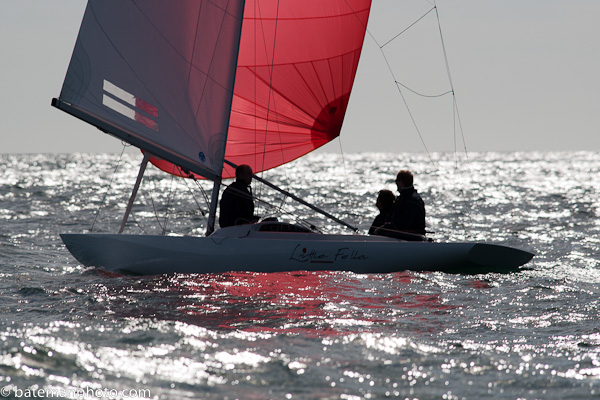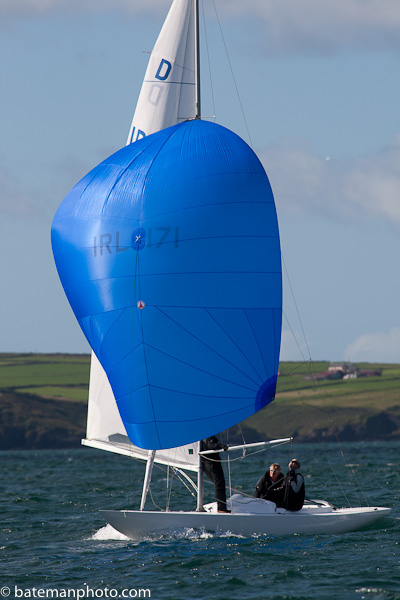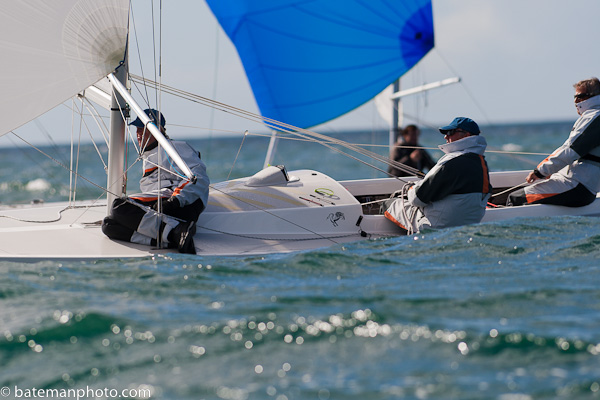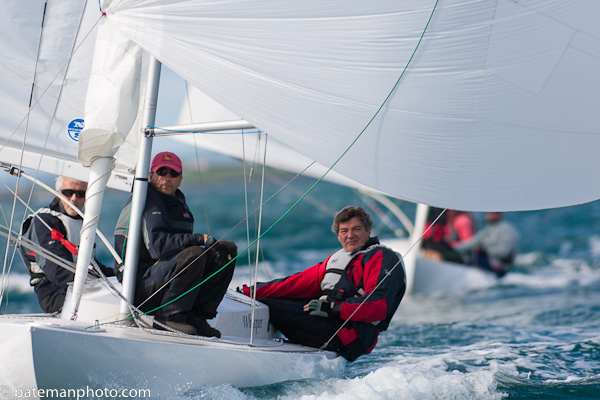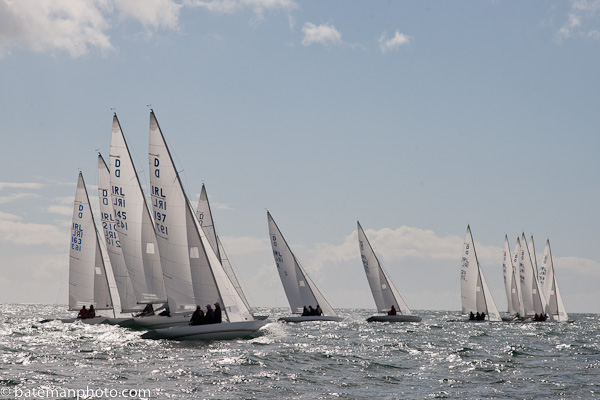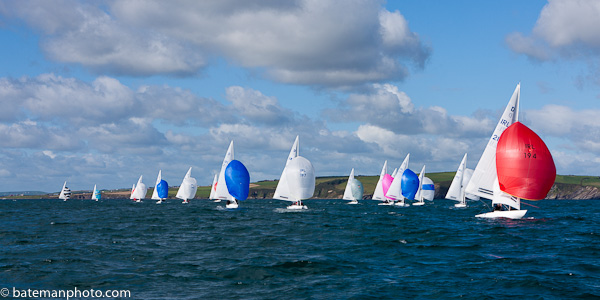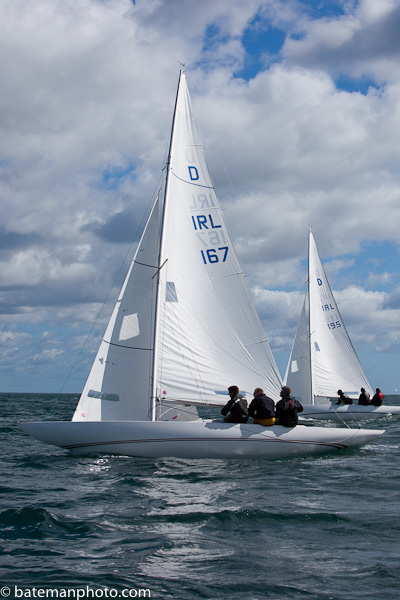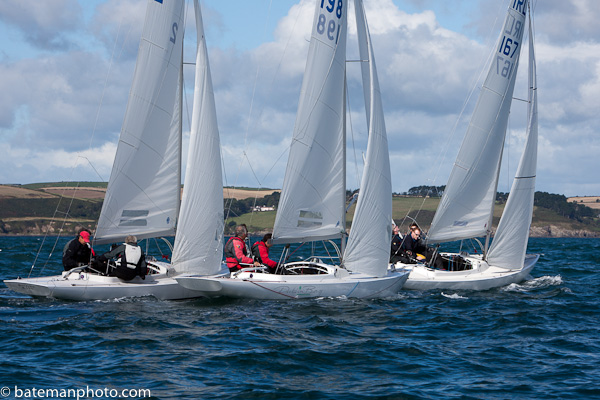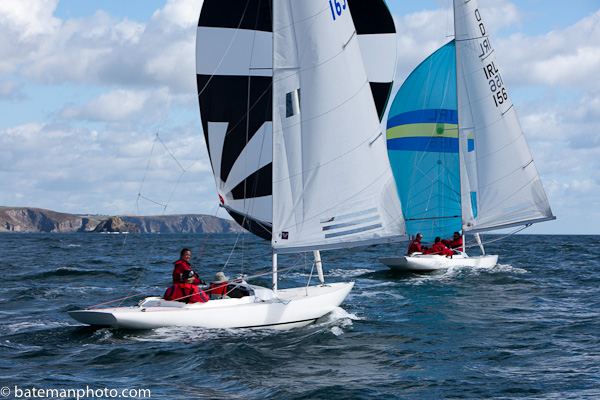By the start of the first race it had built to 15 knots with a touch of north and, with the shelter provided by the Old Head, the sea was much calmer than
that experienced on Friday. There were slight shifts in direction and gusts recorded at 23 knots but using local knowledge of the harbour acquired since
birth, Cameron Good, Simon Furney and Henry Kingston on Little Fella (IRL211) lead the fleet by a considerable margin from Andrew Craig, Brian Matthews and Mark Pettitt on Chimaera (IRL192) and James Matthews with brothers Rick and Rob Johnson in the 'Kinsaled' Diva (IRL210). James retired from Dragon sailing at the tender age of 36 and following the day's exertions, now aged 38, wondered how 'they can they do this for five days?'
Race four again started in ideal conditions but the gusts, which felt much stronger than recorded, heralded a 35 degree shift midway through the first beat and PRO Alan Crosbie and his race management team reacted quickly to reset the course. Andrew Craig's Chimaera recorded the bullet but the finish was so tight between Neil Hegarty's Phantom (IRL176) with Peter Bowring and David Williams, and James and the Johnsons Diva that each acknowledged the others victory.
The top three ordered has altered with Chimaera overtaking Jaguar for the top of the leaderboard and Little Fella maintaining third position. Diva (James and the Johnsons) has overtaken Garry Treacy's Dublin Bay for fourth position.
There are two further races scheduled for today and the eventwill have a new Principal Race Officer for the final third of the series in the very experienced John Godkin. The overused adage that 'it's all left to play for' could not be truer on this occasion, as the discard will be applied on completion of Race 5 of the series and the forecast is set to allow two races.
Day Two photos by Afloat's Bob Bateman
